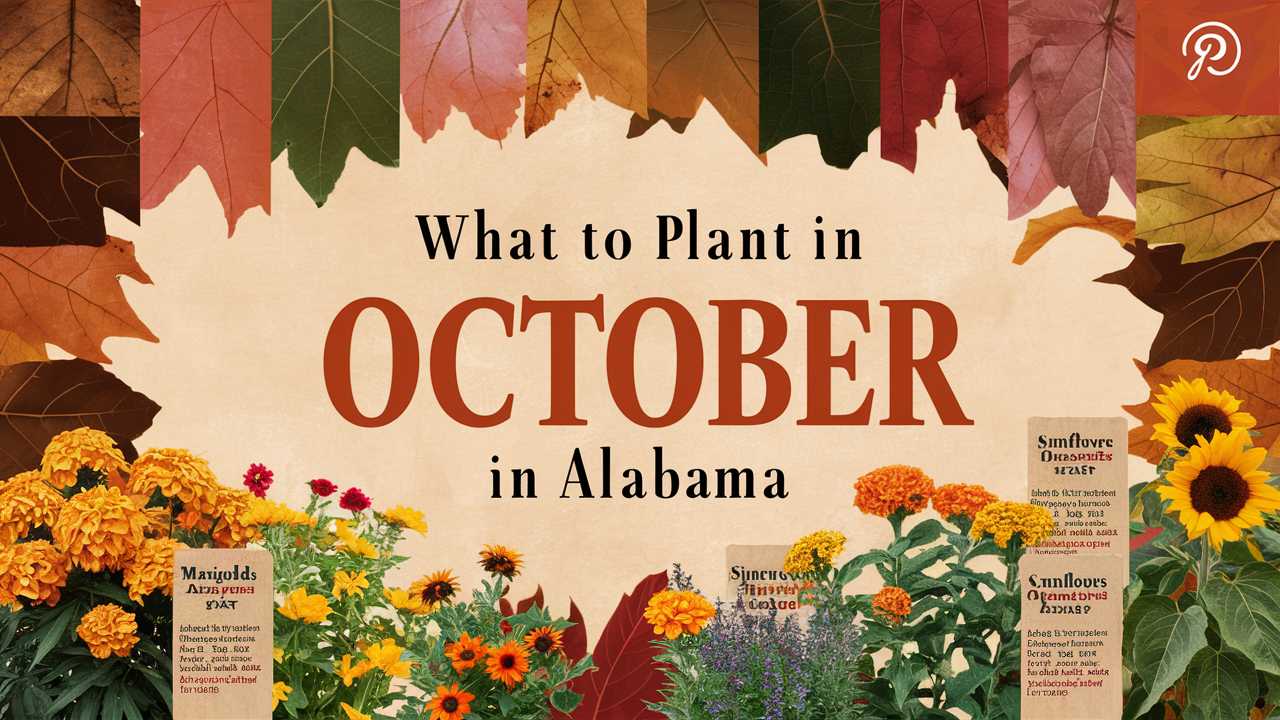For gardeners in Alabama, this month is an opportune time to plan strategic planting for both a bountiful harvest and beautiful landscapes. This in-depth guide dives into the best vegetables, flowers, herbs, and landscape plants to sow in October across the state, considering USDA Hardiness Zones 7b to 8a.
Vegetables To Plant
When considering vegetables to plant in October, it’s essential to choose varieties suited to the cooler temperatures and varied frost dates in Alabama.
Broccoli

Temperature Tolerance: Broccoli thrives best in cooler temperatures, ideally between 60°F to 70°F.
Broccoli can be planted in late September to early October for a fall crop. The key is to sow seeds directly in the ground or transplant seedlings before the first frost. Look for varieties like ‘Green Comet’ or ‘Calabrese’, which are known for their adaptability in the Southern climate. Ensure a planting depth of ¼ to ½ inch, with spacing of 12-24 inches between plants. Broccoli requires consistent moisture, so regular watering is important, especially as it develops.
Kale
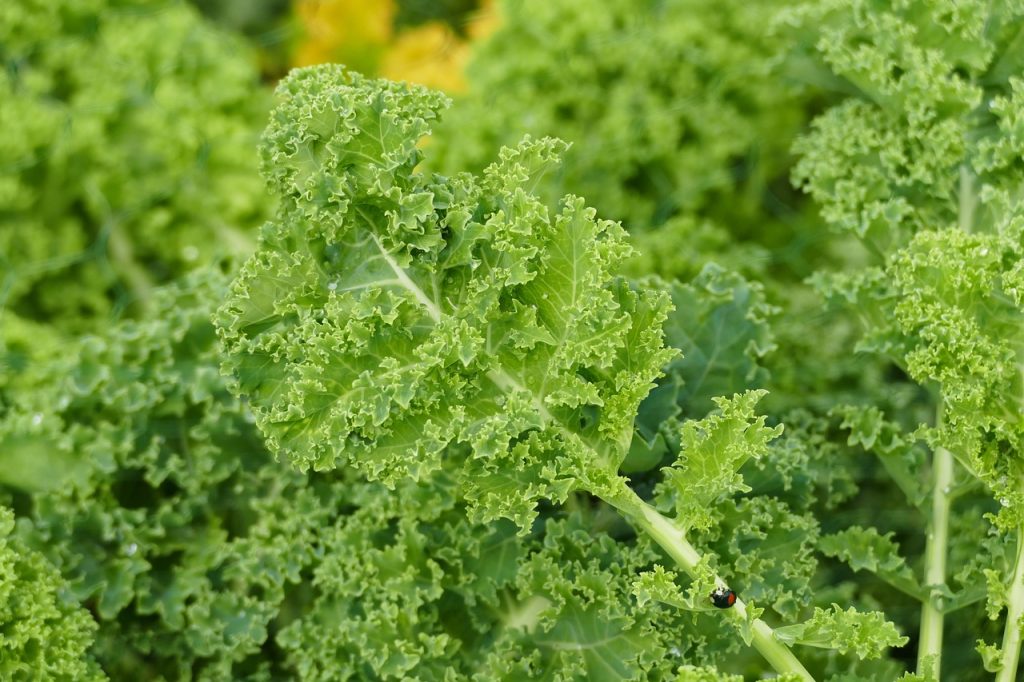
Temperature Tolerance: Kale can withstand temperatures as low as 20°F, making it ideal for late fall harvests.
In Alabama, kale can be sown in early October. It grows well in partial shade, making it perfect for slightly cooler days. Varieties such as ‘Winterbor’ and ‘Lacinato’ not only offer unique textures but can actually become sweeter after a frost. Seedlings should be spaced about 18 inches apart, and planting should occur ¼ inch deep. Kale is hardy, resistant to pests, and provides nutrition through the chilly months.
Spinach
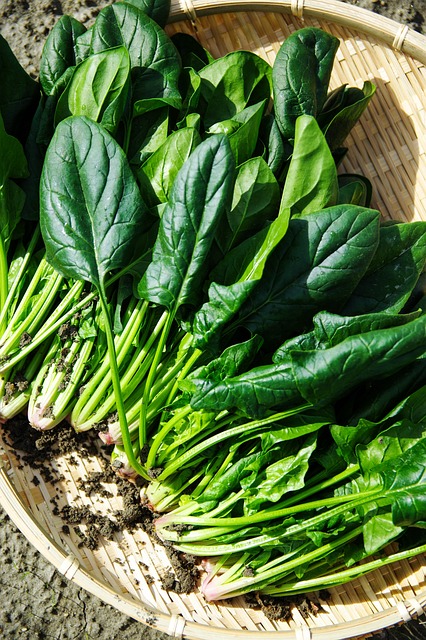
Temperature Tolerance: Spinach prefers cooler weather and can tolerate temperatures down to 20°F.
Plant spinach seeds directly in your garden in early October for a mid-to-late fall harvest. High-yield varieties include ‘Bloomsdale’ and ‘Teton’. Sow seeds ½ inch deep and about 2-4 inches apart, as thinning will be necessary when seedlings emerge. Spinach grows rapidly and can be harvested multiple times; simply cut the outer leaves and allow the inner leaves to continue growing.
Carrots
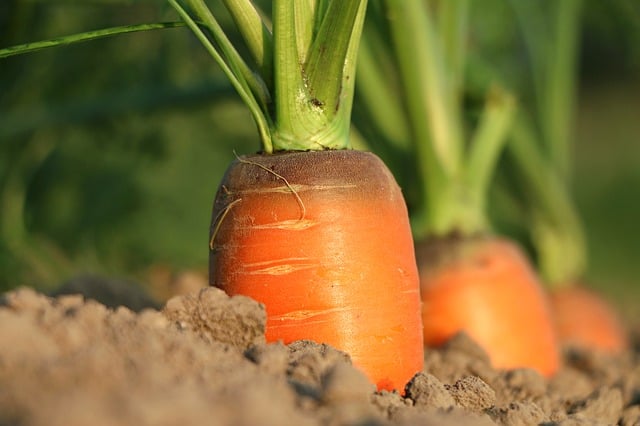
Temperature Tolerance: Carrots can survive frosty conditions but grow best in temperatures between 60°F to 70°F.
In October, you can plant both early and late varieties like ‘Nantes’ or ‘Imperator’. They should be sown directly into well-drained soil at a depth of ¼ inch, with rows spaced 12-18 inches apart. Carrots might take longer to mature in cooler weather, so plan for a harvest around late November. Mulching can help retain soil moisture and warmth as the weather cools.
Radishes
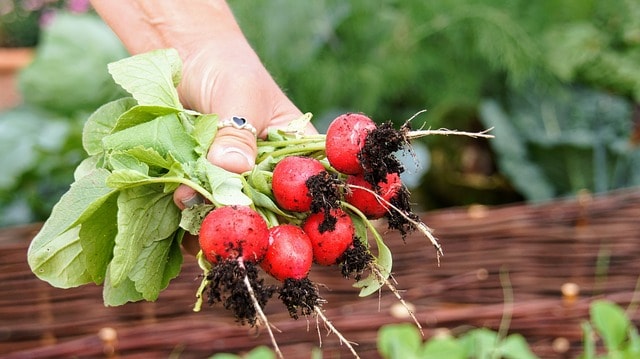
Temperature Tolerance: Radishes prefer temperatures between 50°F and 70°F, making them ideal for quick, cool-season crops.
Plant radishes in early October, as they germinate quickly and can be harvested after just three to four weeks. Varieties such as ‘Cherry Belle’ and ‘French Breakfast’ are great choices for fall planting. They should be sown about ½ inch deep with rows spaced about 12 inches apart. Their fast growth means gardeners can enjoy multiple harvests before the first hard frost.
Lettuce
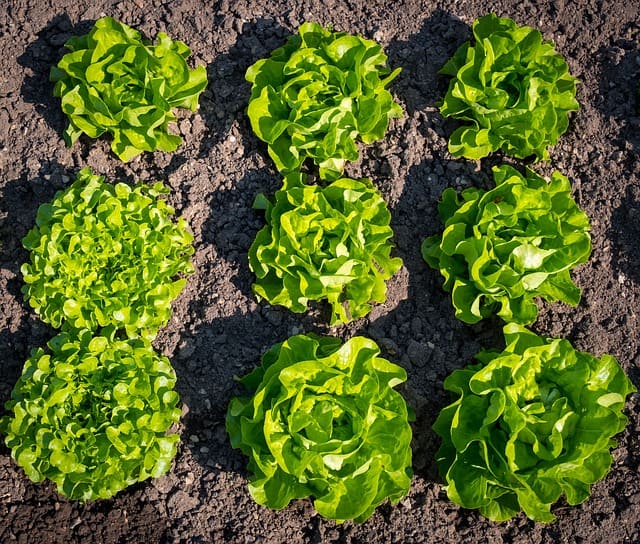
Temperature Tolerance: Lettuce thrives in cooler weather, with optimal growth in 60°F to 70°F.
October is a prime time to plant various lettuce types, such as ‘Butterhead’ or ‘Romaine’. Depending on the variety, you can directly sow seeds ¼ inch deep, spacing them about 12 inches apart. Growing lettuce in partial shade can help extend the growing season, as they are more prone to bolting in warm weather. Keep the soil consistently moist, and you can enjoy fresh salads well into winter.
Swiss Chard
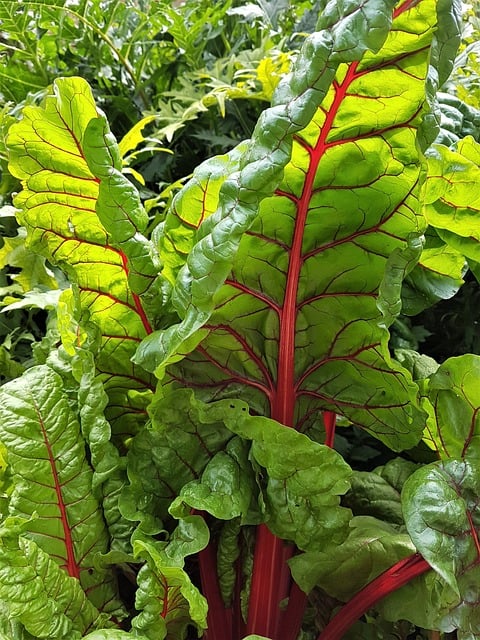
Temperature Tolerance: Swiss chard performs well in temperatures between 55°F to 75°F and can tolerate light frost.
Sow Swiss chard seeds directly in the garden in October. The versatile ‘Bright Lights’ variety not only offers unique colors but is also a vigorous grower. Seeds should be planted about ½ inch deep and 2-4 inches apart. It’s a resilient plant, allowing for a long harvest period throughout the winter and beyond, as you can harvest outer leaves while allowing the middle to continue growing.
Turnips
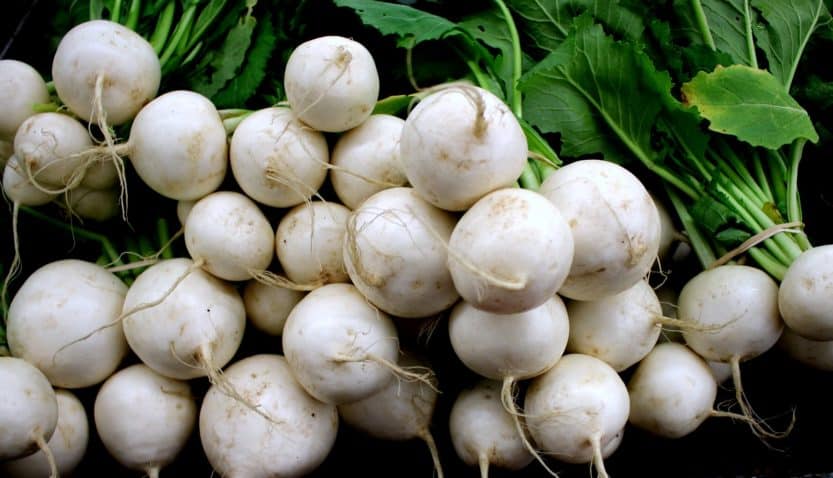
Temperature Tolerance: Turnips prefer cooler temperatures, ideally between 50°F and 70°F.
You can plant turnips in mid-October. Varieties like ‘Purple Top White Globe’ and ‘Hakurei’ are popular selections in Alabama. They should be sown about ½ inch deep with spacing of 4-6 inches apart. As a dual-purpose crop, you can enjoy both the greens and the roots. Turnips are fairly resistant to pests, making them a low-maintenance addition to your fall garden.
Garlic
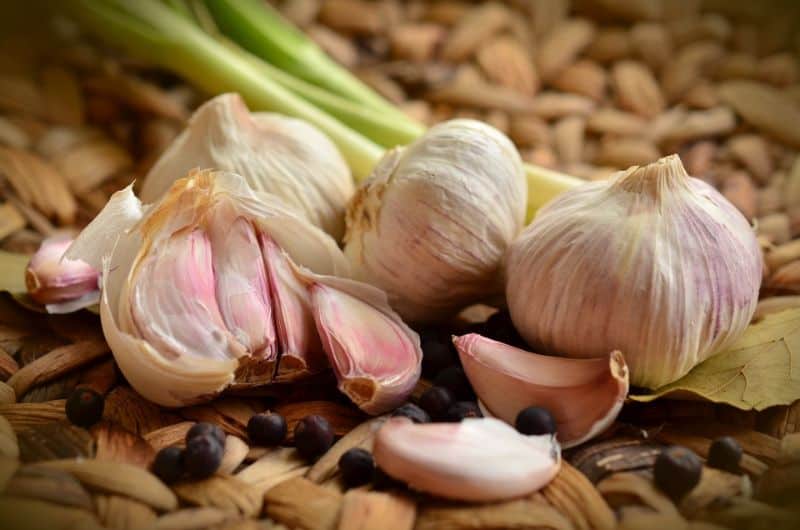
Temperature Tolerance: Garlic does best in temperatures ranging from 32°F to 40°F during the winter months.
Although garlic is typically planted in the fall, it’s essential to sow it by mid-October in Alabama to see successful bulbs the following summer. Choose varieties like ‘Softneck’ or ‘Hardneck’ depending on your preference and climate conditions. Plant cloves about 2 inches deep and 6 inches apart in well-drained soil. Garlic requires consistent watering, especially during the early growing season, and mulching can help to insulate the bulbs during colder months.
Mustard Greens
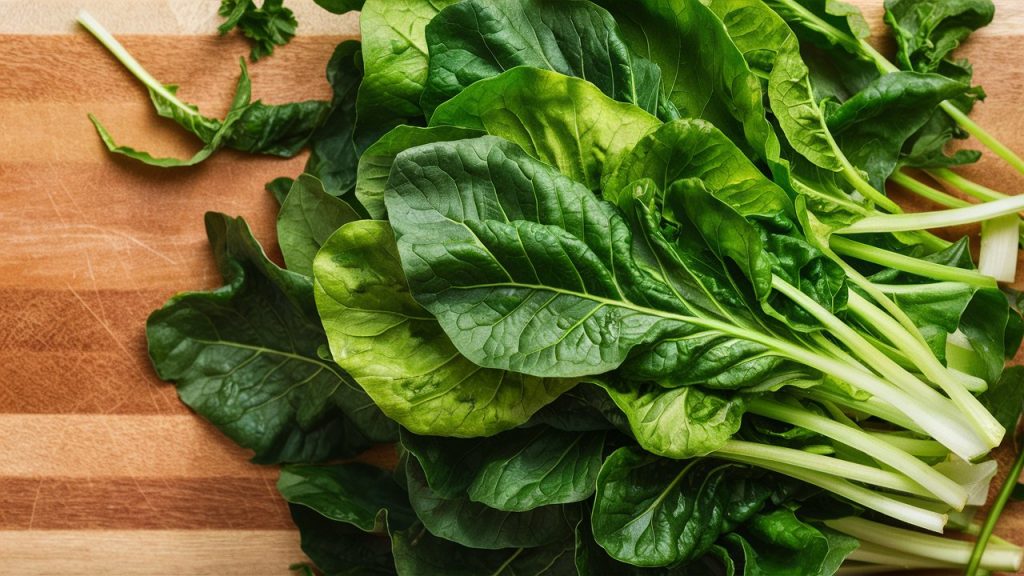
Temperature Tolerance: Mustard greens grow well in temperatures between 50°F and 70°F and are frost-tolerant.
Plant mustard greens in early October for a flavorful, nutrient-rich harvest. Varieties such as ‘Curly Mustard’ and ‘Southern Giant’ thrive in cooler weather. Seeds can be sown ¼ to ½ inch deep, with spacing of 6-12 inches. These fast-growing greens can be harvested as baby leaves or allowed to mature for larger, more robust plants.
Flowers To Plant
Planting flowers in October not only enhances the aesthetics of your garden but also prepares it for a stunning spring bloom.
Pansies
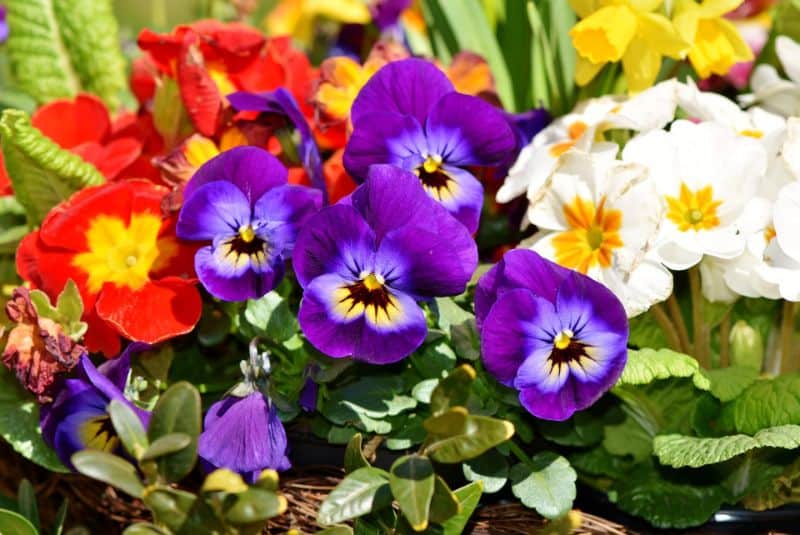
Temperature Tolerance: Pansies thrive in cooler temperatures, ideally between 40°F and 70°F.
October is perfect for planting pansies, which add vibrant color to gardens as they can withstand frost. Look for varieties such as ‘Premium’ or ‘Cool Wave’, both known for their hardiness and vibrant blooms. Plant pansies about 6 to 8 inches apart, at a depth that covers the roots. Regular watering encourages rapid growth and flower production.
Snapdragons
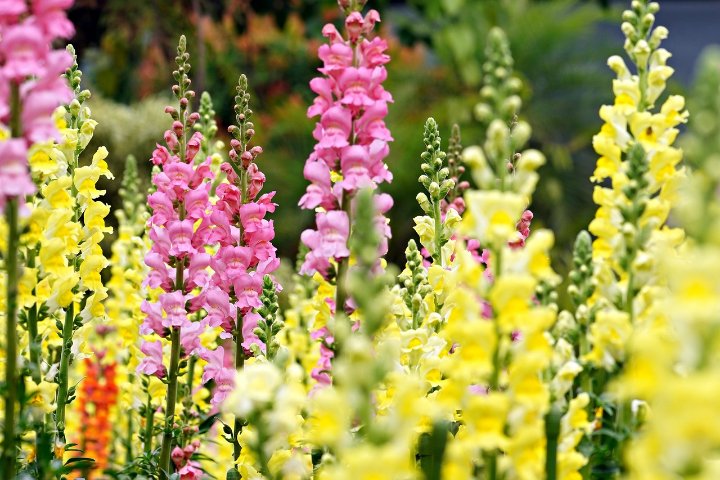
Temperature Tolerance: Snapdragons are frost-tolerant and prefer temperatures between 40°F and 70°F.
Sow snapdragon seeds in October for a stunning display in spring. Varieties like ‘Rocket’ and ‘Madam Butterfly’ are popular for their tall spikes of colorful flowers. Plant them ½ inch deep and about 6-12 inches apart to allow for healthy growth. These hardy perennials can survive mild winters, providing beauty through cold months.
Ornamental Cabbage and Kale
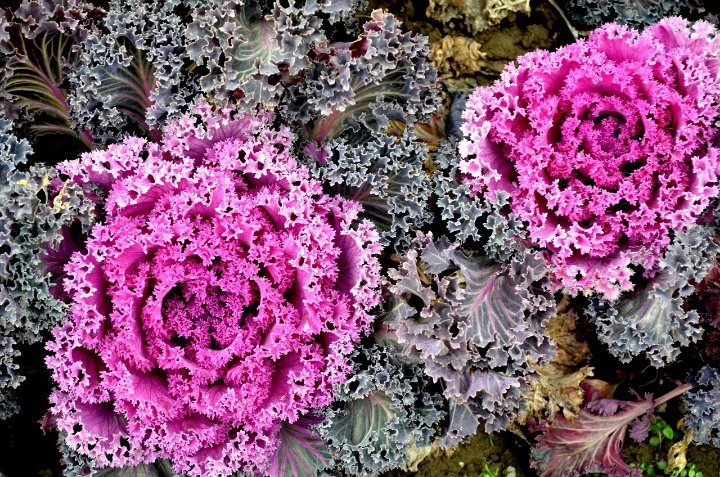
Temperature Tolerance: These ornamental varieties can survive temperatures down to 20°F.
Ornamental cabbage and kale are perfect for autumn displays. Plant in October for vibrant, textured foliage in shades of purple, green, and white. They should be spaced 12-18 inches apart and prefer full sun to partial shade. These plants will remain charming well into winter, surviving cold snaps without losing their visual appeal.
Sweet Williams
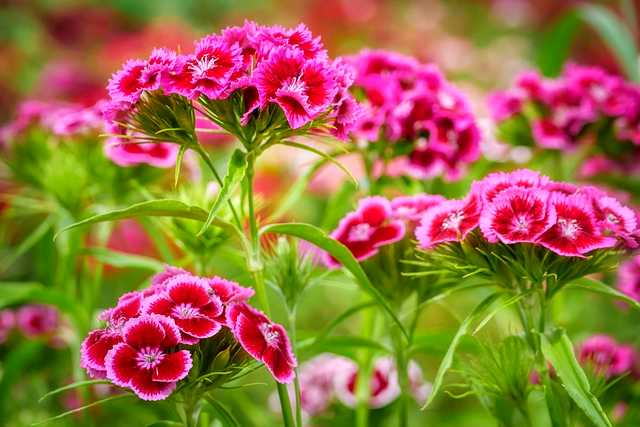
Temperature Tolerance: Sweet Williams thrive in temperatures between 50°F and 70°F.
Ideal for October planting, Sweet Williams flower in vibrant clusters and can survive cooler temperatures. Varieties like ‘Dianthus barbatus’ can be direct-sown or transplanted. Plant seeds about ¼ inch deep and 12 inches apart, allowing sunlight to reach them. With proper care, these biennials will bloom beautifully in the spring, providing delightful fragrance as well.
Bulbs (Daffodils, Tulips)
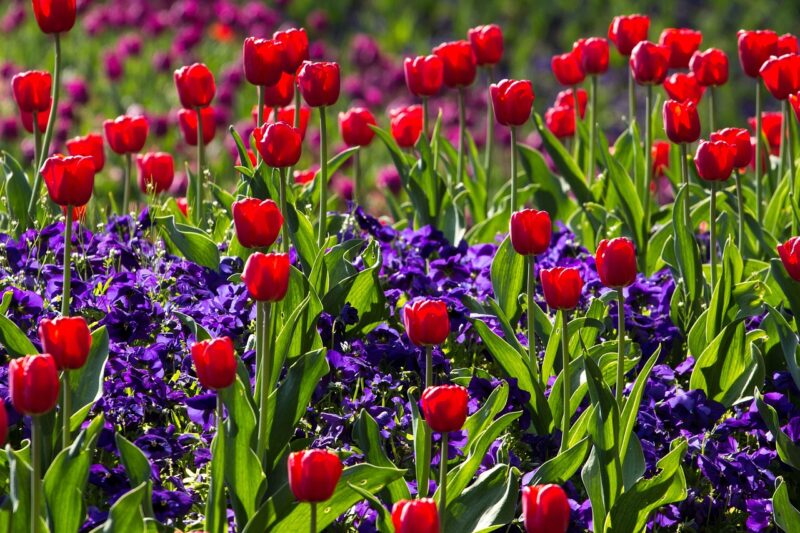
Temperature Tolerance: Daffodils and tulips prefer cooler planting conditions, ideally from 40°F to 60°F.
October is prime time for planting spring-flowering bulbs like daffodils and tulips. Choose hardy varieties such as ‘King Alfred’ daffodils or ‘Darwin Hybrid’ tulips. Plant bulbs at a depth of around 6-8 inches, with spacing of approximately 6-8 inches apart. Daffodils are particularly forgiving and can thrive in various soil types, while tulips prefer well-drained landscapes.
Asters
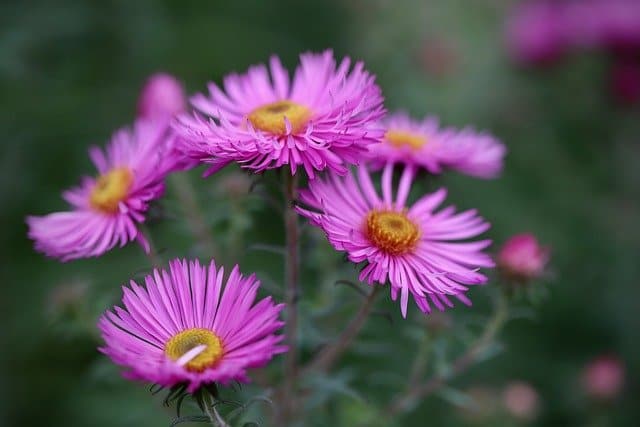
Temperature Tolerance: Asters do well in temperatures between 50°F and 70°F and can withstand light frost.
Asters bloom in the fall and are excellent for planting in October. Varieties like ‘New England Aster’ provide vibrant colors and attract pollinators. Plant them 12-18 inches apart and at a depth that covers the root ball. Regular watering and deadheading will promote continued blooms throughout the season.
Dianthus
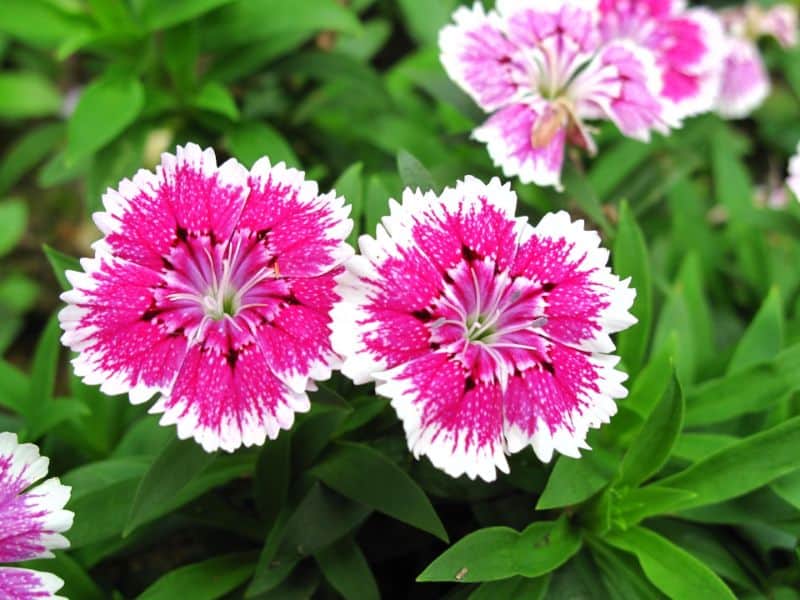
Temperature Tolerance: Dianthus plants can tolerate a range of temperatures and do well in full sun.
October is an optimal time to plant dianthus, a perennial known for its fragrant blooms and attractive foliage. Varieties like ‘Sweet Williams’ and ‘Formosa’ are particularly popular. Space plants 12 inches apart and plant at a depth that keeps the crown rather than burying it. These resilient flowers come in various colors and can bloom throughout spring and summer.
Gaillardia (Blanket Flower)
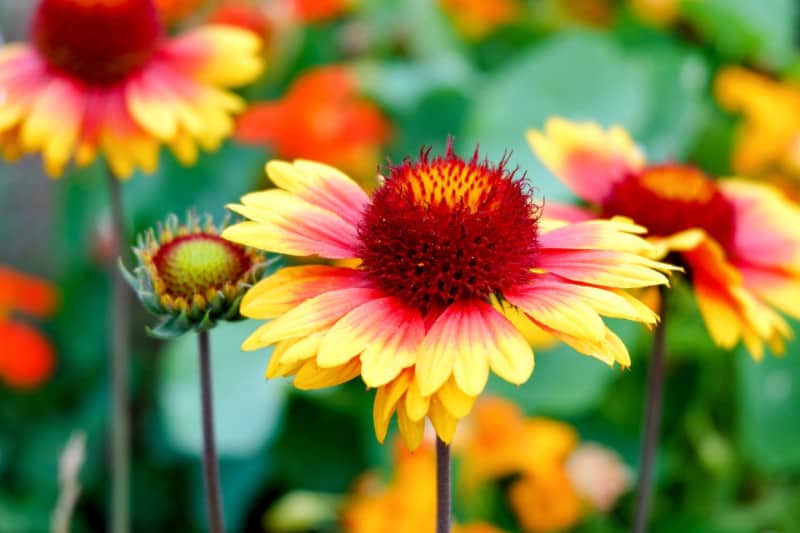
Temperature Tolerance: Gaillardia is tolerant of high heat but can also survive cooler fall temperatures.
Plant gaillardia in early October to enjoy colorful, daisy-like flowers that last from spring through fall. Space them approximately 12 inches apart and plant at a depth of about 1-2 inches. Gaillardia is drought-tolerant once established, requiring minimal watering, making it perfect for low-maintenance flower gardens.
Chrysanthemums

Temperature Tolerance: Mums thrive in moderately cooler temperatures.
Chrysanthemums are perfect for October planting and peak in bloom in late fall. Choose varieties like ‘Autumn Delight’ or ‘Garden Mum’. Plant them in full sun, spacing 18-24 inches apart. These hardy perennials are great for enhancing fall landscapes with rich colors like orange, yellow, and maroon.
Foxgloves
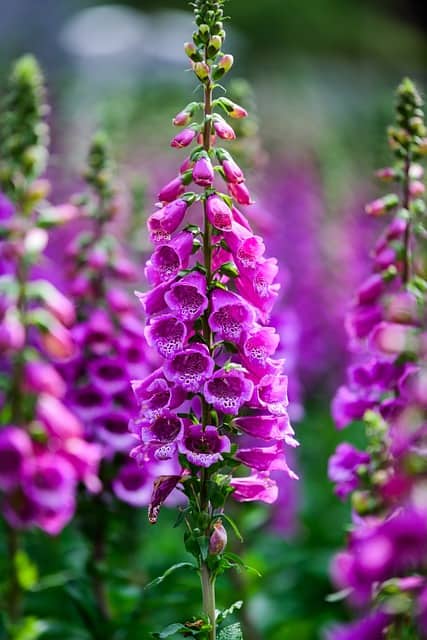
Temperature Tolerance: Foxgloves prefer cooler weather and can tolerate some frost.
Sow foxglove seeds in October for stunning tall spikes of tubular flowers in the spring. Varieties like ‘Digitalis purpurea’ are particularly well-suited for Alabama gardens. Plant seeds 1/4 inch deep and space them about 12 inches apart. Foxgloves thrive in slightly acidic, well-drained soil and need regular watering to establish strong roots.
Herbs To Plant
October is also a great time to plant a variety of herbs, many of which can be used in your kitchen or for medicinal purposes.
Cilantro
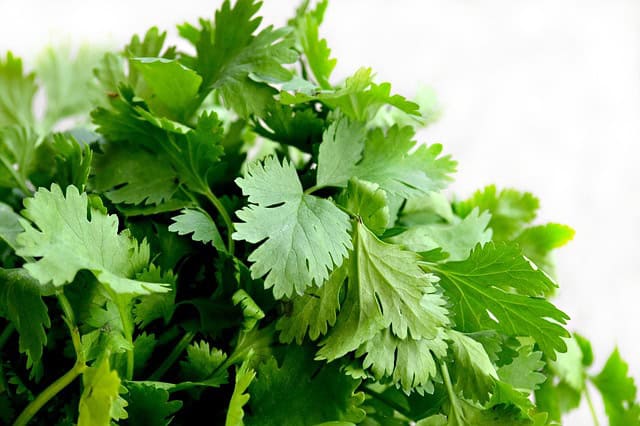
Temperature Tolerance: Cilantro grows well in cooler temperatures, ideally between 50°F and 75°F.
Cilantro can be directly sown in October, and it is known for its quick growth cycle. Seeds should be planted about ¼ inch deep and spaced 6 inches apart to allow for full growth. This herb prefers sunny locations but can tolerate partial shade. Regular harvests encourage continuous growth.
Parsley
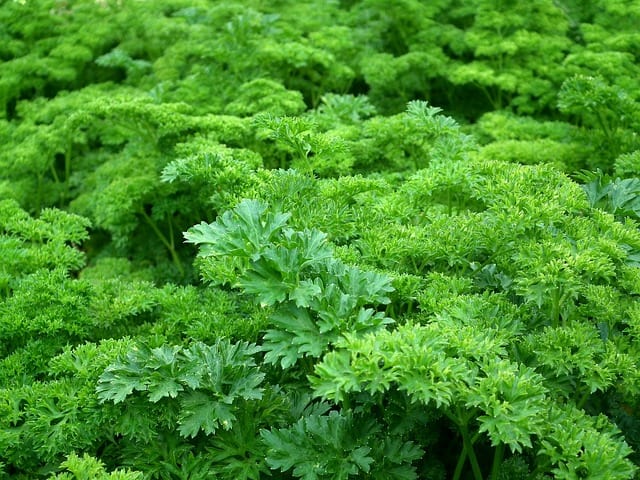
Temperature Tolerance: Parsley thrives best in mild conditions, around 50°F to 75°F.
In Alabama, October is the ideal time to plant flat-leaf or curly parsley. Seeds can be sown ¼ inch deep and spaced 6-8 inches apart. Parsley requires consistent moisture and benefits from mulching to keep the soil cool. As a biennial, parsley can over-winter in the garden to provide fresh leaves for cooking during winter months.
Thyme
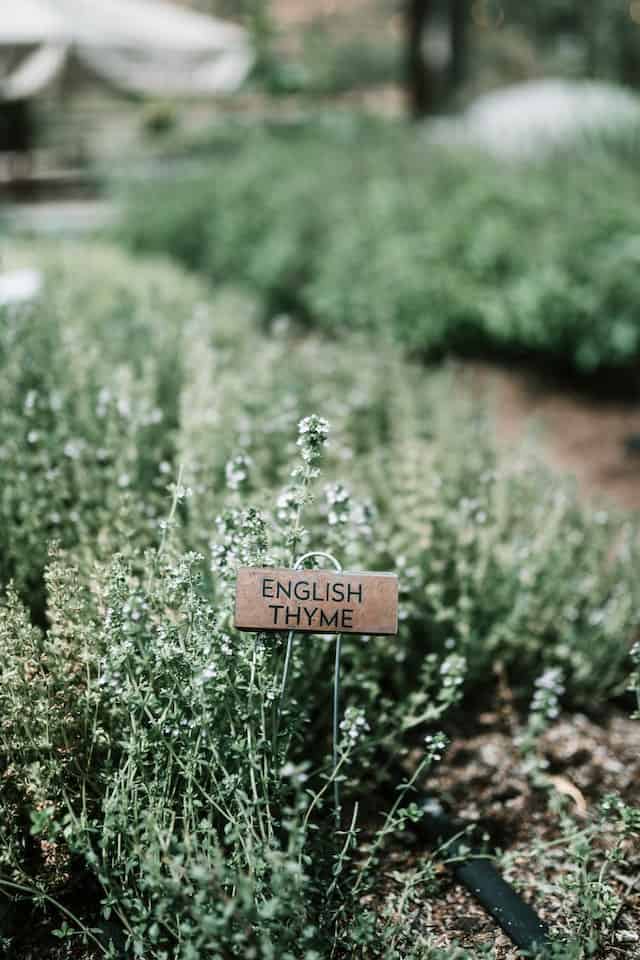
Temperature Tolerance: Thyme tolerates a range of temperatures and prefers between 60°F and 70°F.
October is suitable for planting thyme, a hardy perennial herb that can withstand mild frosts. Seeds should be sown about ¼ inch deep, while transplants can be spaced 12 inches apart. Thyme thrives in well-drained soil with plenty of sunlight. Once established, it requires little water and can be harvested throughout the year.
Oregano
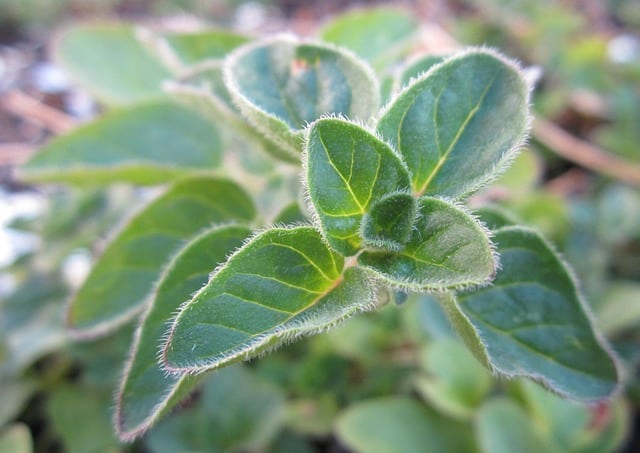
Temperature Tolerance: Oregano thrives in temperatures between 60°F to 80°F.
Plant oregano in mid-October for a robust flavoring herb that can survive cool temperatures. Seeds should be sown about ¼ inch deep and spaced 12 inches apart. Oregano loves full sun and well-drained soils. This perennial herb will return every spring and can be used fresh or dried.
Chives
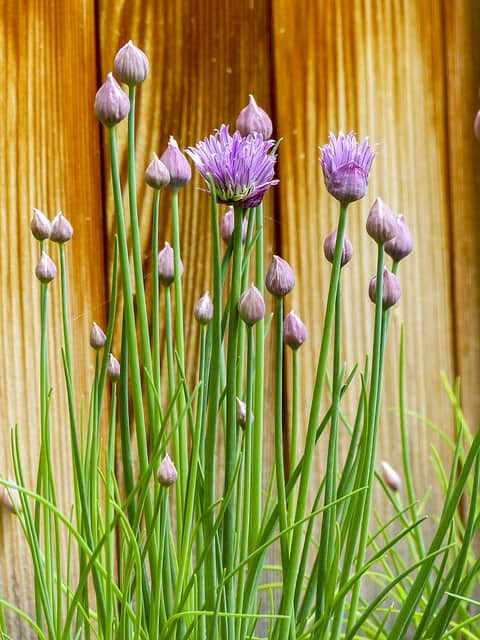
Temperature Tolerance: Chives are hardy and can survive temperatures down to 20°F.
October is perfect for planting chives, which are known for their mild onion flavor. Seeds should be planted ¼ inch deep and spaced 6 inches apart. Chives thrive in full sun and moist, well-drained soil. They require minimal maintenance and can survive the winter, providing herbal aspirations throughout the cold months.
Dill
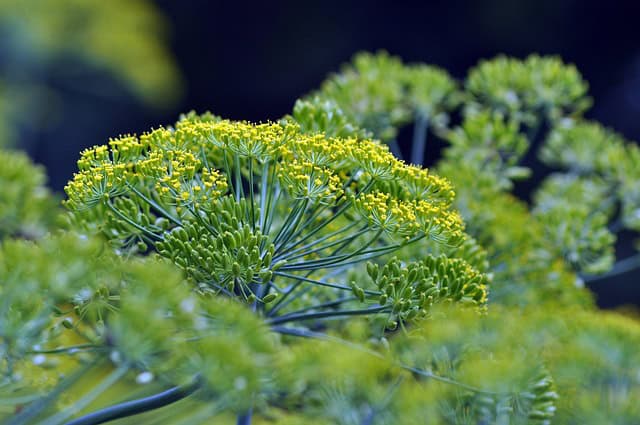
Temperature Tolerance: Dill prefers mild temperatures and should be grown between 50°F to 70°F.
Sow dill seeds in early October for a bountiful herb harvest. Plant seeds about ¼ inch deep and 10-12 inches apart. It prefers sunny spots and needs regular watering but also well-drained soil. Dill can be harvested lightly for culinary use, and it attracts beneficial insects to the garden.
Mint
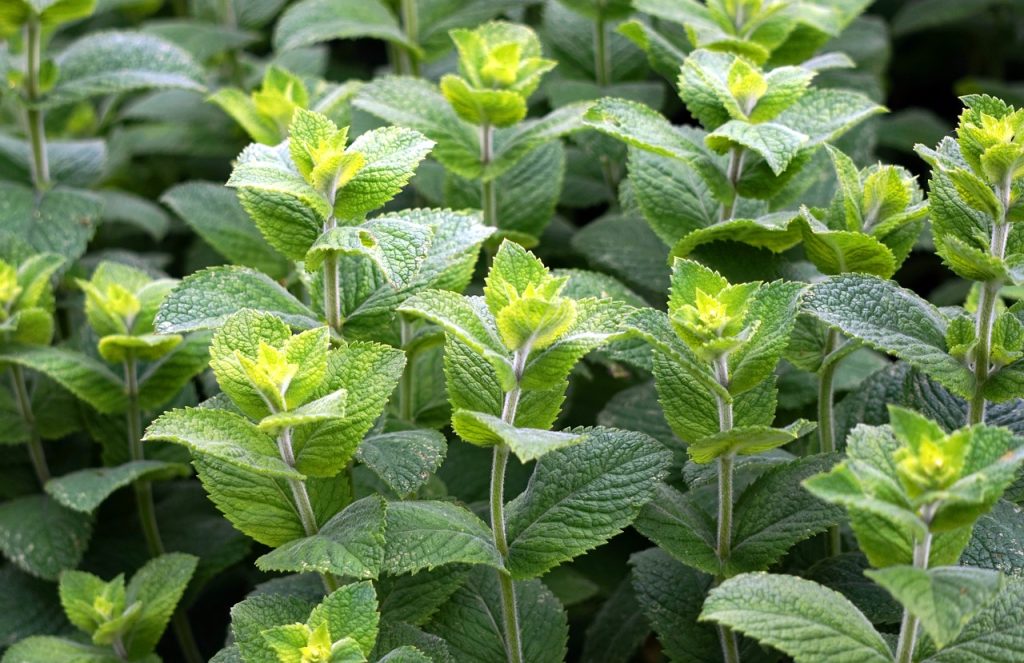
Temperature Tolerance: Mint enjoys moderate temperatures and can withstand light frost.
October is a great time to start mint, as it can thrive in containers or garden beds. Stem cuttings or dormant roots can be planted about 3-6 inches apart. Mint flourishes in full sun but also tolerates partial shade. It spreads quickly, so consider planting it in containers to control its growth.
Sage
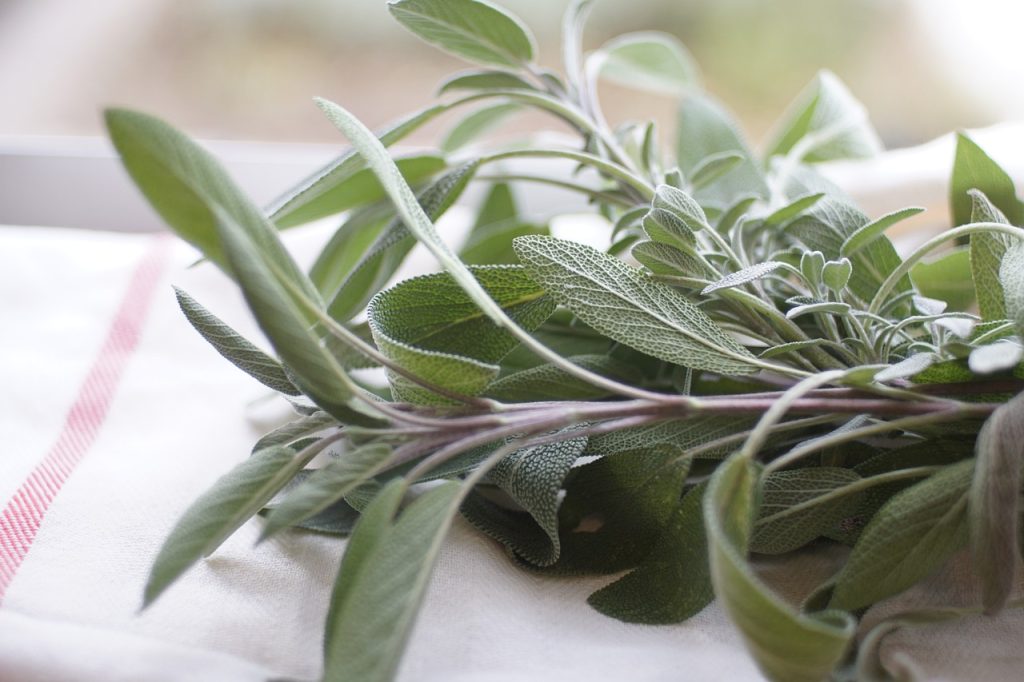
Temperature Tolerance: Sage prefers warmer conditions but can survive light frost.
Plant sage in October for culinary use. Seeds should be sown ½ inch deep, keeping about 18 inches of spacing. Sage thrives in well-drained soil and full sun, needing moderate watering. Once established, sage is a perennial that can return year after year.
Rosemary
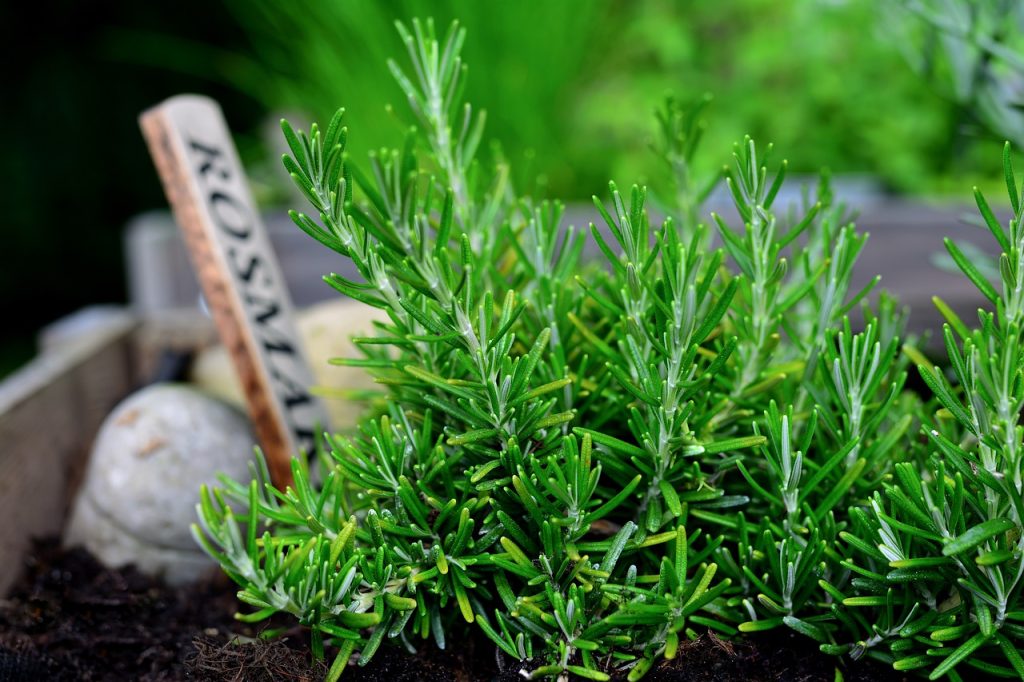
Temperature Tolerance: Rosemary prefers temperatures between 60°F and 75°F and is frost-sensitive.
October is ideal for planting rosemary in containers as this herb doesn’t handle frost well. Transplants should be spaced 18 inches apart; the roots can be buried ½ inch below the soil. Rosemary thrives in well-drained soil and requires full sunlight. As a hardy perennial, rosemary will grow and can be used year-round.
Basil
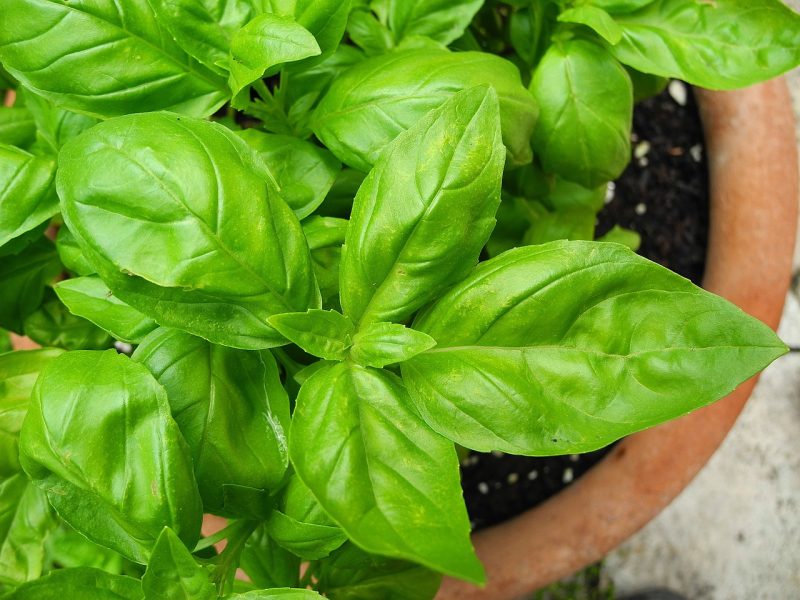
Temperature Tolerance: Basil prefers warmer temperatures and is sensitive to frost.
In Alabama, while basil is typically a summer herb, if you have a warm microclimate, you can plant it early in October. Seeds should be sown about ¼ inch deep and spaced 12 inches apart. Basil thrives in full sun and needs consistent watering to maintain its delicate leaves. After the cold sets in, basil can be brought indoors for continued growth.
Landscape Plants To Plant In October
October offers an excellent opportunity to plant various landscape plants that can enhance your garden and thrive during the milder winter months.
Camellias
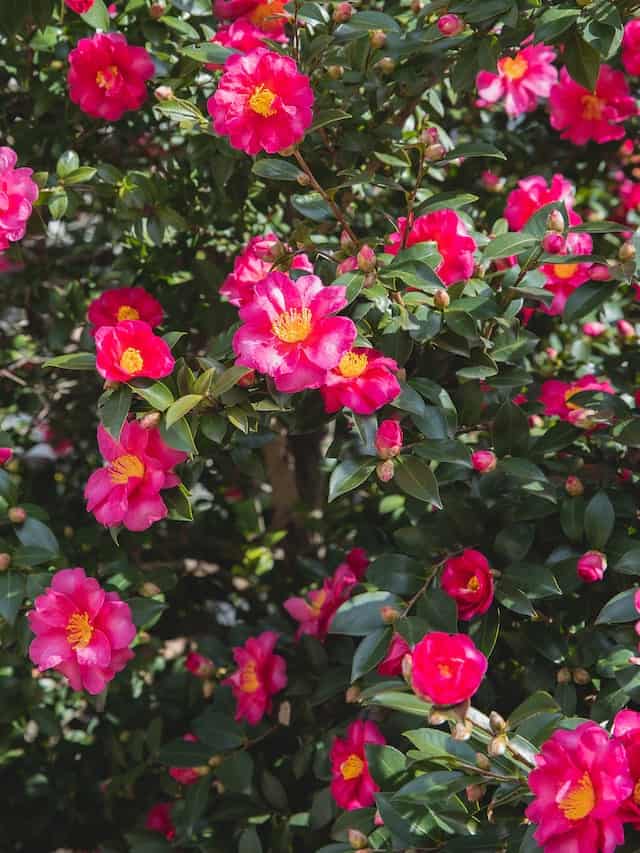
Temperature Tolerance: Camellias thrive in areas with a temperature range of 30°F to 60°F.
October is the ideal time for planting Camellias, known for their stunning winter blooms and glossy foliage. Varieties such as ‘ japonica’ and ‘sasanqua’ perform exceptionally well in Alabama gardens. Plant them in well-drained, acidic soil, about 4 feet apart, at a depth that maintains the root ball. Camellias prefer partial to full shade, making them perfect for under trees or in shaded sections of the garden.
Holly
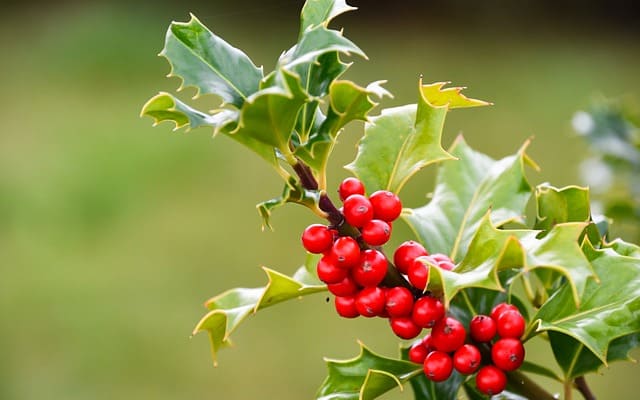
Temperature Tolerance: Hollies are hardy and can endure temperatures as low as 0°F.
Planting hollies in October provides a great opportunity to establish their roots before harsher winter temperatures arrive. Varieties like ‘Nellie R. Stevens’ are popular for their colorful berries. Plant them approximately 6-10 feet apart in well-drained soil, making sure to cover the root ball. Hollies can thrive in both sun and shade, offering year-round visual interest with their leaves and fruit.
Azaleas
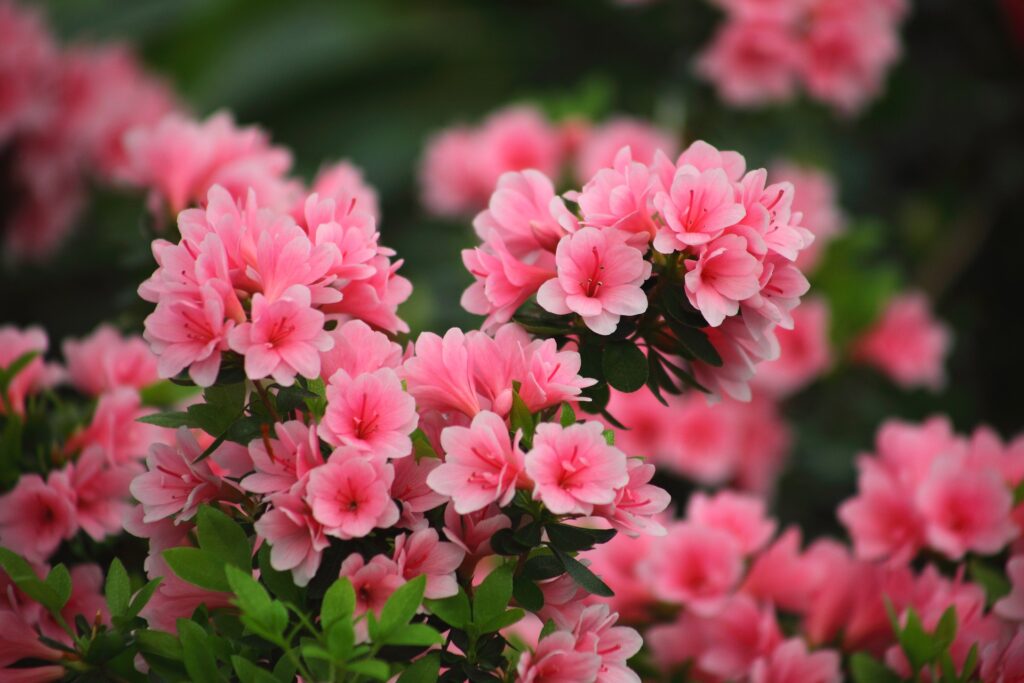
Temperature Tolerance: Azaleas can tolerate freezing temperatures down to 0°F.
October is a perfect time to plant azaleas, especially deciduous types that bloom in spring. Popular varieties like ‘Encore’ or ‘George L. Taber’ can provide outstanding color and vibrancy to your landscape. Space them 3-5 feet apart in well-draining, acidic soil. These plants prefer partial shade, especially during the hottest part of the day.
Daylilies
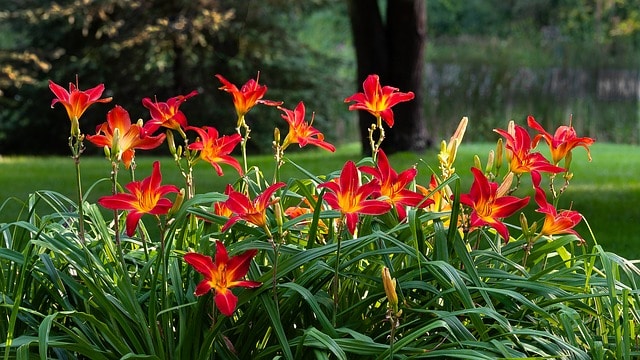
Temperature Tolerance: Daylilies can survive freezing temperatures and thrive in range from 30°F to 70°F.
Plant daylilies in October for vibrant blooms come spring. Varieties such as ‘Stella de Oro’ are compact and prolific in producing flowers. They should be spaced 1-2 feet apart, planted at a depth that covers the roots. Daylilies are adaptable to various soil types and prefer full sun to partial shade. They’re drought-tolerant once established, making them a low-maintenance addition to any landscape.
Liriope
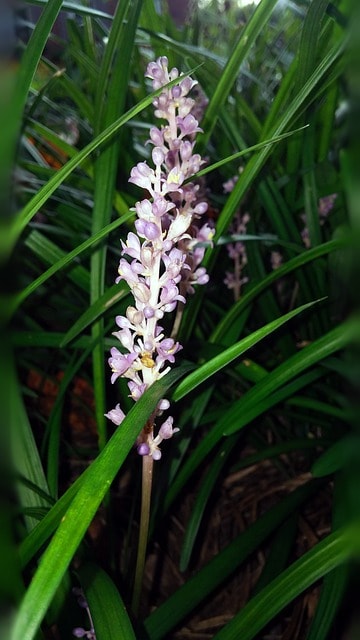
Temperature Tolerance: Liriope is hardy and can tolerate a wide range of temperatures but thrives best between 60°F to 70°F.
October is the time to plant Liriope, a grass-like perennial that provides attractive ground cover. The ‘Big Blue’ and ‘Emerald’ varieties adapt well to diverse landscape designs. Plant them about 12 inches apart and 1-2 inches deep. Liriope can handle partial shade and is excellent for borders and edging.
Coneflower (Echinacea)
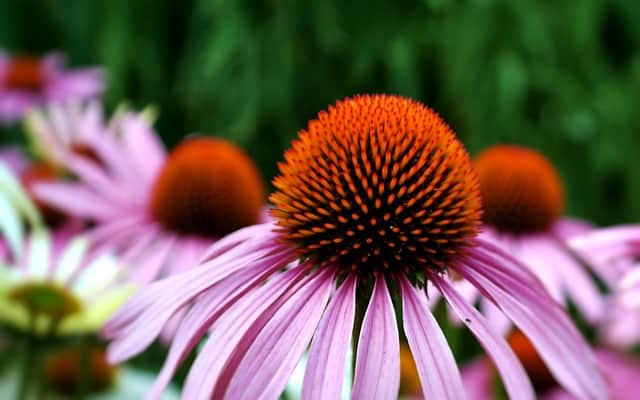
Temperature Tolerance: Coneflowers prefer mild to warm temperatures and can withstand some frost.
Octobers are ideal for planting coneflowers, known for their vibrant purple blooms. Varieties like Echinacea purpurea thrive in Alabama’s climate. Space them about 2-3 feet apart and plant them at a depth of roughly 1-2 inches in well-drained soil. Coneflowers attract pollinators and are drought-tolerant once established.
Japanese Maple
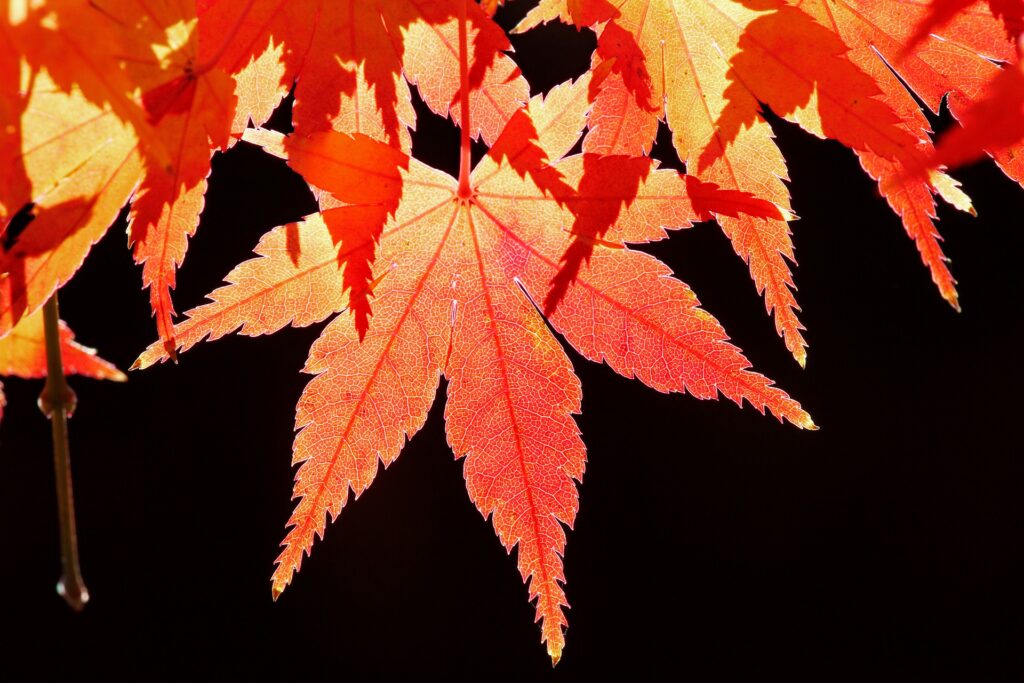
Temperature Tolerance: Japanese maples thrive in temperatures between 20°F and 70°F.
October is a great time for planting Japanese maples, known for their stunning foliage in spring and fall. Varieties like ‘Bloodgood’ or ‘Viridis’ add unique shapes and colors to your landscape. Ensure adequate space of 10-15 feet for mature growth, and plant in well-drained, acid soil. They prefer partial shade, especially in the hotter months.
Crepe Myrtle
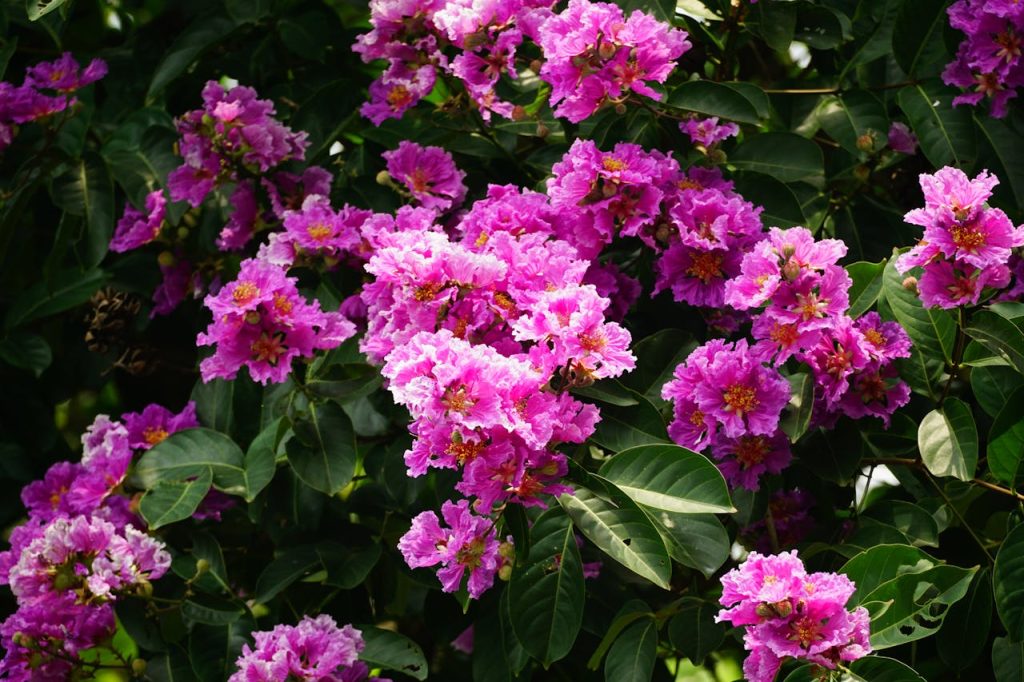
Temperature Tolerance: Crepe myrtles thrive in a range of temperatures from 30°F to 100°F.
Sow crepe myrtles in October for hardy plants that bloom in summer. Varieties like ‘Muscle White’ or ‘Natchez’ are popular for their resilience and vibrant flowers. Trim them back slightly to encourage robust growth. Space them about 15 feet apart in well-draining soil. Crepe myrtles prefer full sun exposure.
Boxwood
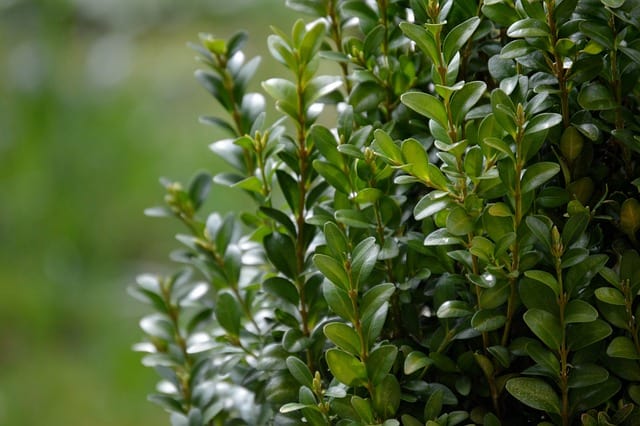
Temperature Tolerance: Boxwoods can tolerate temperatures from 0°F and higher.
October is the optimal time for planting boxwoods, popular for their dense foliage and versatility in landscapes. ‘English Boxwood’ and ‘Japanese Boxwood’ are excellent choices. Space them 2-3 feet apart, planting them at the same depth as in their container. Boxwoods do well in full sun but can also thrive in partial shade, making them suitable for a range of garden settings.
Arborvitae
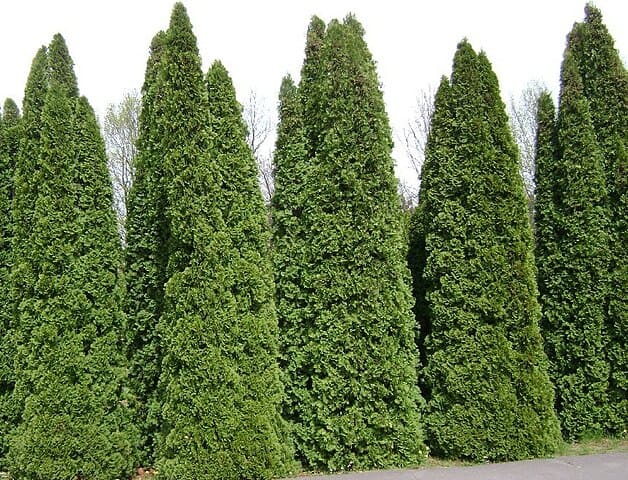
Temperature Tolerance: Arborvitae are cold hardiness zones 3-7 and survive temperatures down to -20°F.
Plant Arborvitae in October for robust evergreen privacy hedges. Varieties like ‘Green Giant’ or ‘Eastern Arborvitae’ are well-suited for Alabama gardens. They should be spaced 4-6 feet apart, as they can reach heights of up to 40 feet. Plant in well-drained soil with ample sunlight for optimal growth.


